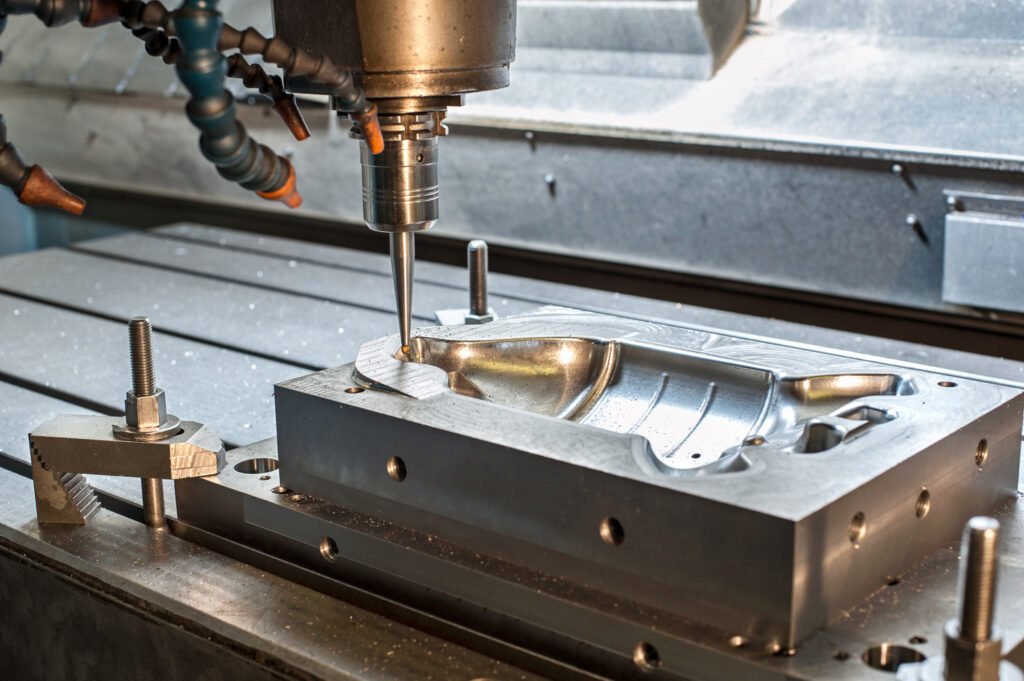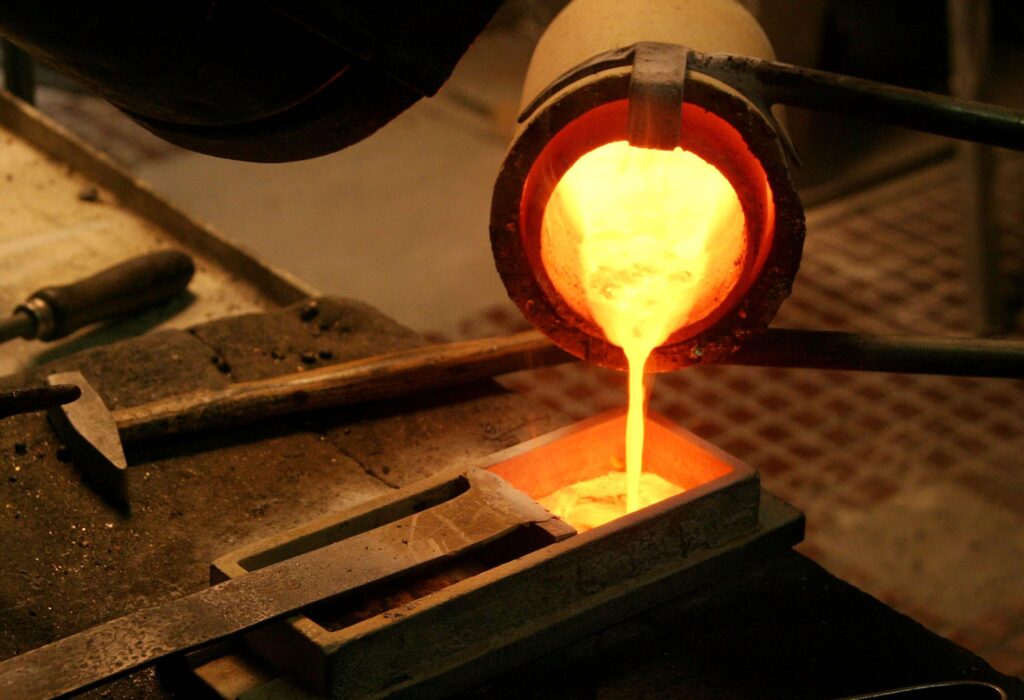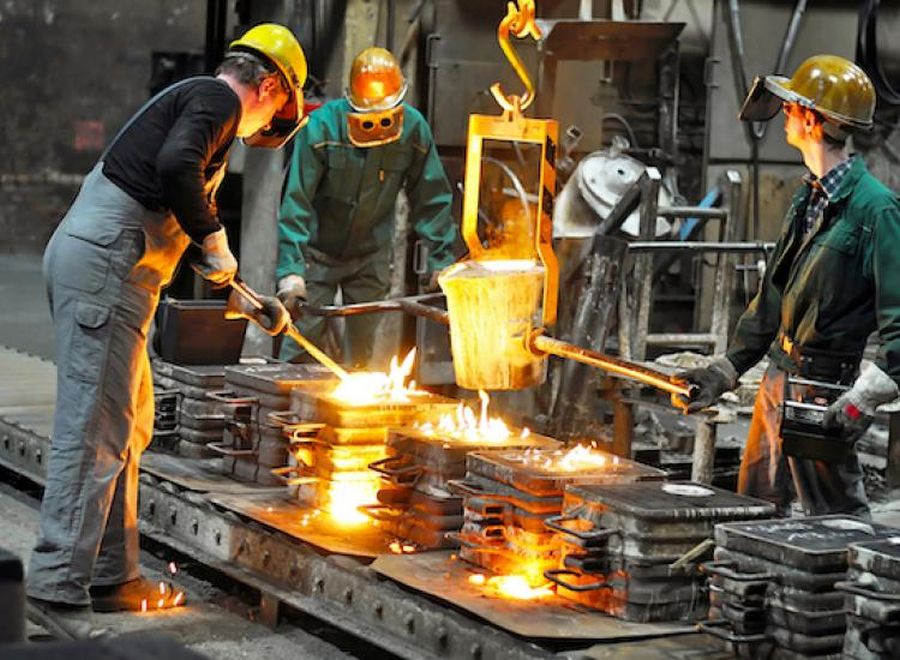Mold making and metal casting are essential to many manufacturing processes. These techniques have been in use since a long time ago, and it’s how most of our every-day items are made.
So, no matter if you’re about to start your own foundry, or you’re perhaps just curious about mold-making and casting, you’ve come to the right place. In this article, we’ll go over the basic aspects of these processes, so keep on reading to find out everything a beginner needs to know about these manufacturing techniques!
Mold creation- patterns and cores
When it comes to mold creation, there are two main categories: creating reusable and non-reusable molds. Reusable molds can be produced directly since they do not require the use of patterns. These types of molds are used in permanent casting, but we’ll talk more about that later on. Now, a pattern is a tool used to create the molds, and it must be slightly larger than the final product to avoid shrinkage during the solidification of the materials. Basically, you’ll plan the shape of the mold using a CNC machine.
Similarly, complex mold designs would require you to include specific devices called cores. These are used to create internal cavities and reentrant angles inside the molding. We use something called a core box to create cores, but that’s a lesson for another day.
Overall, the first step in mold-making and casting is creating patterns and cores. As these are just the basics, you should find in-depth explanations of these terms in a manufacturing handbook.

Img source: http://mtsplastics.com/
Melting the metal
The next part of the manufacturing process would be melting the metal. This process is quite straightforward: we place the alloy (a mixture of metallic elements) in a receptacle with a higher melting point and simply heat it until the alloy melts. There are also methods such as the induction melting, which is perhaps more refined as it relies on the physical properties of the metal to melt it.
Whatever the case, the manufacturer must calculate the melting temperature carefully. Different types of metals are used for different types of components, and they all have different melting temperatures.
So, while the mechanics of metal melting are quite simple, there still needs to be a lot of research and calculating done beforehand.
Pouring the metal into the mold
Next, the molten metal needs to be poured into the mold. This is accomplished by using a ladle system, which allows the machine operators to adjust the pouring speed and angle. This process is a bit more complex than it meets the eye, though. If, for example, the metal gets poured too quickly or too slowly, the quality of the final product would be majorly affected. Improper pouring methods can lead to defects and holes caused by trapped gases inside of the molding.
So, making a single wrong move during the metal-casting processes can completely ruin the final product. The only way to fix defective products once the metal is poured is by redoing the process all over again once it cools off.

Img source: iget-manufacturing.com
Solidification
Naturally, when the pouring of the molten metal is done, the only thing that’s left is to wait for it to cool off. This should be done in a carefully controlled and monitored environment to ensure the metal solidifies properly. As we mentioned before, manufacturers must consider the types of metal that went into the alloy to determine the solidification techniques.
As you can see, every single one of these steps requires a lot of knowledge and experience. According to Dawangcasting.com, the next time you’re looking for a steel casting company to manufacture your components, make sure you take a long look at their portfolio.
Mold removal
When the metal solidifies, it’s time to remove the mold. Non-reusable molds are simply broken away from the final product. Now, when it comes to reusable molds, the techniques are a bit different. Usually, special finishes are used to prevent sticking, and the mold itself is designed with ejection features.
After the mold is removed, the final product needs to be cleaned and inspected for quality. Sometimes, the item will require additional heat treatment to refine and optimize its structure further.

Img source: ussilica.com
Different types of metal casting
Now, we’ve covered the basics of the metal casting manufacturing processes, but it’s not all there is to it.
What we described were some basic techniques used in metal casting, but now we’re going to be a bit more specific. Namely, there’s a couple of different casting techniques used in the industry:
- Centrifugal casting- As the name suggests, centrifugal casting involves pouring the molten metal into a spinning die. There are two types of centrifugal casting: vertical and horizontal. When it comes to vertical casting, graphite, sand, or ceramic mold is placed inside of the die before the metal is poured. As the die spins the denser metal is pushed to the sidewalls, while the impurities float to the center. After the metal cools off, the impurities are easily machined away to ensure quality. Horizontal centrifugal casting works in the same way, but the only difference is that the die is in the shape of a horizontal tube.
- Investment casting- In investment casting, the manufacturer makes a wax pattern of the finished product. Then the pattern assembly is dipped in a ceramic mixture until it reaches the appropriate thickness. After that, the shell is heated until the internal wax is melted away, and that’s how we get our mold. The mold is preheated and the metal is poured inside. When it all solidifies, the next step is to simply break the mold away.
- Sand casting- Sand casting involves using wooden or synthetic patterns, which are then dipped in a mixture of sand, and bonding agents until the mold is strong enough to withstand the temperatures of molten metal. After the sand sets, the pattern is removed and the metal is poured. Lastly, when the metal is cooled, the sand is broken away and reclaimed for future use.
Of course, even these methods have different variations, as there’s always a need for new techniques and methodologies in this industry.
Overall, this article should serve as an introduction to mold making and metal casting, which are both extremely complex and nuanced techniques that require a lot of work to be mastered.



